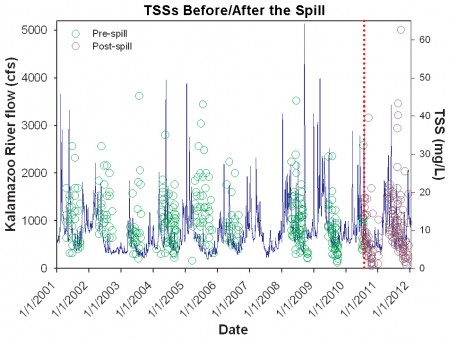On July 26, 2010, a pipeline rupture released ~1M gallons of diluted tar sands crude oil into Talmadge Creek and the Kalamazoo River, MI (USA) impacting over 30 miles of the river. RPI was tasked with assisting the multidisciplinary Scientific Support Coordination Group (SSCG) in providing scientific support to the response and the USEPA, and developing a Net Environmental Benefit Analysis (NEBA).
The main goal of the NEBA is to assess the potential ecological consequences of oil cleanup activities on aquatic receptors within eight major riverine habitats, using all available data collected during oil cleanup operations, as well as data from specific studies requested by the SSCG. We interpreted: 1) sediment chemistry results; 2) acute toxicity testing with common benthic test species; and 3) turbidity data from sediment agitation- a technique extensively used for oil recovery in 2011.

